
Services > Hair Transplant
Hair Transplantation
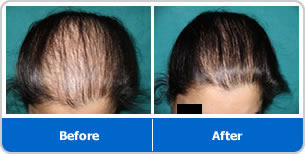
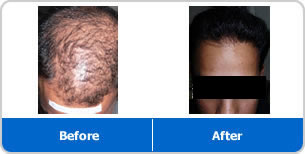
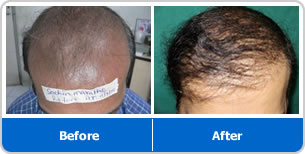
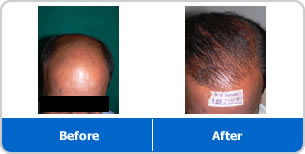
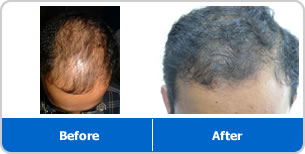
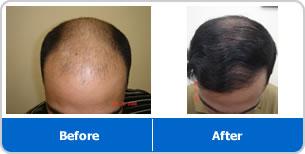
Hair loss is one of the most frustrating experiences for people. The most common type of hair loss is known as Androgenetic Alopecia or male pattern baldness, despite the fact that women suffer from it as well. Over 30 million men and women in the U.S. alone suffer from baldness.
There are many reasons for hair loss or baldness, including aging, genetic factors, medication, stress and local diseases.
Male pattern baldness is most common in males and is a combination of genetic factors and hormones (dehydro-testosterone); these factors lead to various degrees of baldness, in the front of the head and on the crown. Women can become bald for the same reasons.
There has recently been news about medicines and new “revolutionary” shampoos that prevent hair loss, yet after a short while these companies disappear.
Likewise, new institutes are cropping up, claiming to “treat” hair and guaranteeing a thorough examination of the hair and a practical solution for hair loss. In fact, to date, there has been no practical solution for hair loss apart from hair transplants.
With most people who go bald, hair loss appears in the front part of the scalp, while the back area always retains hair. This is due to the fact that the hair in the back has genetic characteristics that make it resistant to the DHT hormone. Therefore the concept of transferring hair follicles from the rear area to the balding area is always successful if the procedure is done correctly.
Since 1959, hair transplantation techniques have undergone radical improvements, particularly in the past decade.
Hair transplantation is the most widespread treatment when dealing with hair loss.
How is hair transplantation done?
Hair transplantation is done under local anesthetic and virtually no pain is felt during and after the procedure. Patients lie on their stomach for 15 minutes, and hair is taken from the rear scalp area. Afterwards, a skilled team separates the hair into strips consisting of between 1-4 follicle parts (follicular units).
With the aid of a special device, circular puncture marks or grooves are made in the balding area that will undergo the transplant, and the graft that has been prepared is inserted into the punctured area. During the procedure, the patient listen to music, speaks with the medical team and often sleeps.
At the end of the procedure (that lasts approximately six hours), patients go home.
In cases of significant baldness, scabs will appear in the upper puncture area, but they fall off in 5-10 days, along with the hair that has been implanted (however the roots remain). Growth begins naturally after three months, and the hair grows at a rate of one cm a month in the new area. The final results can be seen in nine months to one years time.
The fresh grafts need good blood around them during their adaptation. Therefore the grafts cannot be placed too closely together, with less than a one-millimeter of space between them. Naturally, each graft must be surrounded by skin that has not undergone any surgical procedure for at least five months, explaining why follicle implantation is done in stages.
In some cases, four hair transplants can be performed on the same person (depending on the donor site). In most cases the patient is satisfied after a single transplant and a second one is not necessary. However, if the patient desires thicker growth, an additional treatment can be performed.
Naturally, the more transplantation is performed, the thicker and fuller the hair will be. Hair transplants are not done solely on bald people. The technique is especially successful in those who are not completely bald, but who suffer from thinning hair. In these cases, the transplant is done between the existing hairs. The physician's expertise prevents the existing hairs from being harmed.
An experienced and skillful team performs the hair transplant. An experienced physician cannot perform the procedure well, if the team is not skilled. We also recommend that the patient consult with a well-known dermatologist as to who is qualified to perform the transplant. It is important to be aware that a transplant, which is done incorrectly, may lead to irreparable damage. Therefore it is vital that the doctor who performs the hair transplant is a dermatological or plastic surgery expert.
In the U.S. and Europe, 70% of physicians who perform hair transplants are dermatologists, 25% are plastic surgeons, and 5% are other types of doctors.
FOLLICULAR UNIT TRANSPLANTATION
Even after 30 years of progress, hair transplantation remains the most effective method in surgical rehabilitation of the hair.
The key to strand transplantation is identifying the natural groups of the patient's hair, extraction of these follicular units from the skin that surrounds them, and placing these units into the transplant area in a manner appropriate for the density and distribution of an adult.
The factors imperative for transplants are: precise calculation of the donor's hair, accurate separation of follicular units, prudent design of the transplant area to create an immediate cosmetic effect and usage of a larger number of transplants for a smaller number of transplantations. All this is part of a long-term plan that takes into account the development of male baldness and the expectations of the patient.
The concept of follicle transplantation is based on the premise that hair generally does not grow homogeneously, except for around the hairline, but rather grows from the scalp in clumps called follicles. From a histological perspective, these units are formed from 1 to 4 hairs, surrounded by a peripheral line of encompassing collagen.
We separate the FU into 1, 2, 3 or 4 hairs, and implant them in the bald area. We will implant FU with one hair in the hairline, behind this single FU; we will implant the other grafts of 2, 3 and 4 hairs to create density. We generally create the incisions using a special needle (0.7 to 1 mm). We decide where to place each graft and in which directions to implant. After one hour, we complete making all the grooves and along with the team of dermatologist begins to implant the follicular units.
FUE (FOLLICULAR UNIT EXTRACTION)
Hair transplantation leaves a minimal scar, of one to three mm wide. It is usually not visible, because the remaining hair in the area hides it. However, in some cases, any type of scar is not recommended, even if it is minimal. This is generally the case with young men, who are used to very short haircuts. In this case a scar will be seen and therefore this method is not recommended. Another example is among patients who have undergone a number of transplants in the past and an additional strip of hairs cannot be taken because the skin is no longer flexible.
In such cases, singular follicles can be extracted from the donor site with a special apparatus that is similar to a hollow needle. This device allows the hair follicles, those composed of 1-3 hairs together, to be removed from the root, according to the patient's hair density. As a result of the graft there will be a one-millimeter diameter sore, a wound that heals within a few days and leaves no mark whatsoever. The follicles are implanted into the bald area with a fine needle.
While this technique is very good, it has some disadvantages:
It is recommended for relatively small, focused areas such as covering scars, inlets and eyelids.
-
Patient must come to the operation after having shaved their hair (1mm), so that extraction of follicles can be accomplished easily.
-
Before beginning the surgical procedure, an examination must be carried out to see whether the patient is suitable for the FUE technique. There are rare cases where the inner part of the hair (the part found under the skin) is not in the same direction as the growing hair, a fact that inhibits the extraction of the hairs perfectly. This case is called negative FOX, and FUE is not recommended in this case.
-
Time. This technique is a lengthy process. Implanting 800-1,000 follicles can take between 5-6 hours (and not every patient is capable of lying on his stomach for six hours consecutively).
-
Quantity. The amount of hair that can be implanted is minimal and varies between 700-1,000 follicles (whereas in a regular transplant 3,000 follicles are taken).

